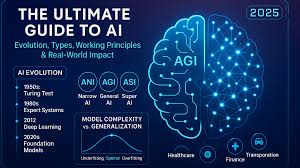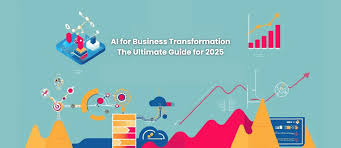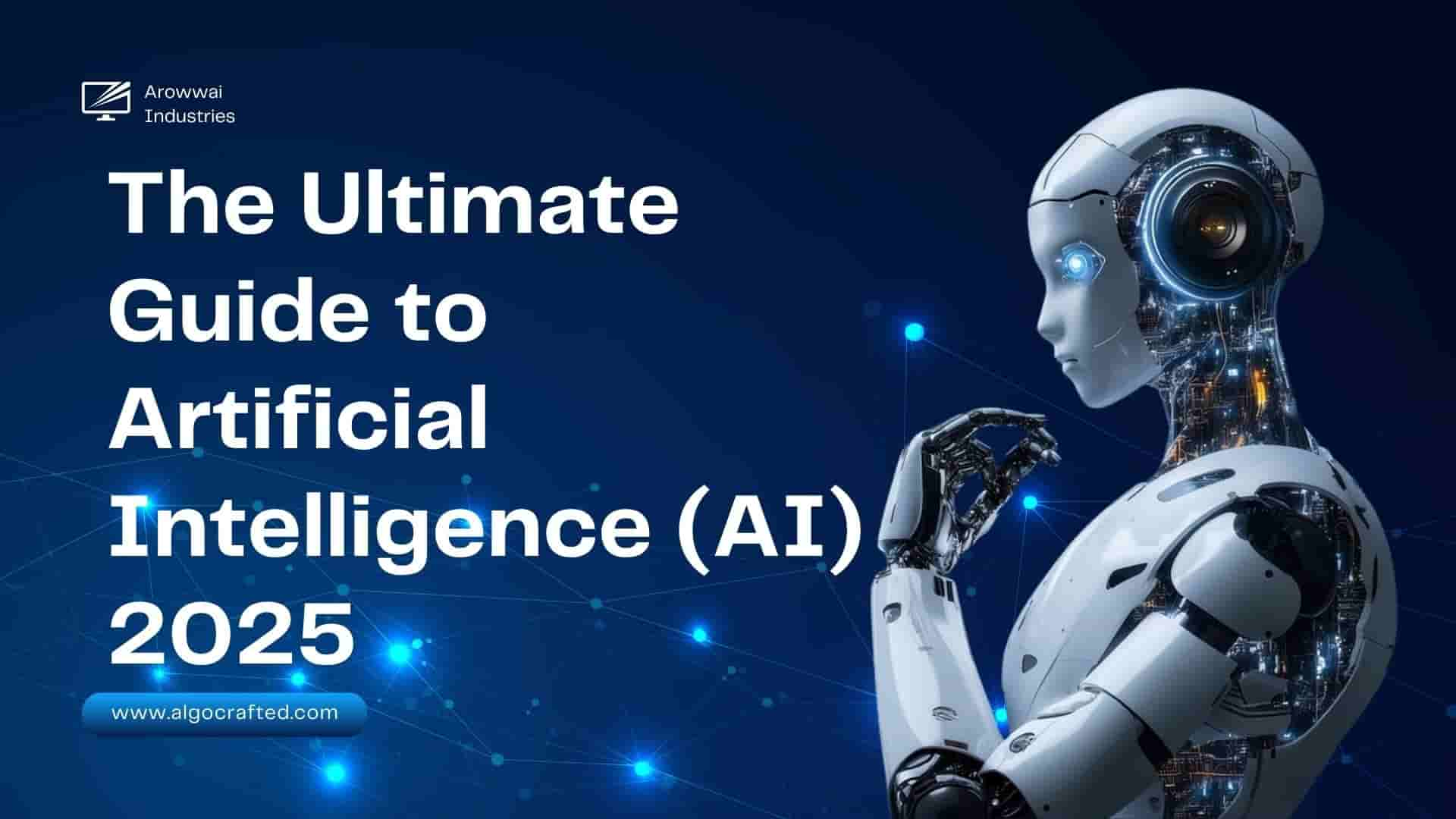What Is Artificial Intelligence (AI)?
Defining AI: The Basics
Artificial Intelligence (AI) is like giving machines a brain to think, learn, and make decisions—without the coffee addiction or existential crises. At its core, AI enables computers to perform tasks that typically require human intelligence, such as recognizing images, understanding speech, solving problems, or even generating witty blog posts (don’t worry, this one’s human-crafted with a sprinkle of AI inspiration). AI systems analyze massive datasets, spot patterns, and make predictions, improving over time like a super-smart intern who never sleeps.
The term “Artificial Intelligence (AI)” was coined in 1956 by computer scientist John McCarthy at the Dartmouth Conference, where the field was born. Back then, AI was a lofty dream—computers were room-sized behemoths with less power than your smartwatch. Today, AI powers everything from your Spotify playlist to fraud detection in banking. It’s not perfect; sometimes AI’s more like a toddler with a calculator than a genius, but its potential is mind-boggling.
A Brief History of AI
The journey of Artificial Intelligence (AI) is a rollercoaster of breakthroughs, hype, and “AI winters” (times when funding dried up). In the 1950s, researchers dreamed of machines that could think like humans. Early programs like the Logic Theorist solved math proofs but were glacially slow. The 1980s brought “expert systems,” mimicking human expertise in fields like medicine, but they lacked flexibility.
The 2010s were AI’s golden age, thanks to big data, faster computers, and machine learning. Key milestones include:
-
1956: Dartmouth Conference births AI as a field.
-
1997: IBM’s Deep Blue defeats chess champion Garry Kasparov.
-
2011: IBM’s Watson wins Jeopardy! against human champs.
-
2016: Google’s AlphaGo beats world Go champion Lee Sedol.
-
2020s: AI models like GPT-3 and DALL·E redefine creativity and communication.
Today, AI’s in your pocket, your car, and even your fridge. Curious about the timeline? Our History of AI post has the full scoop.
Types of AI: Narrow vs. General
Not all AI is created equal. Here’s the breakdown:
-
Narrow AI: This is today’s AI, specialized for specific tasks. Think Siri answering questions, Netflix suggesting shows, or your Roomba avoiding furniture. Narrow AI is a one-trick pony with a PhD in that trick—great at its job but clueless otherwise. For example, a spam filter can’t drive your car.
-
General AI: The sci-fi dream, General AI would match human intelligence, learning any task from cooking to quantum physics. It’s the ultimate multitasker, but we’re decades away—think more Star Trek than Next Week. Researchers are chipping away, but it’s like chasing a unicorn.
-
Superintelligent AI: A hypothetical future where AI surpasses human intelligence, solving problems we can’t fathom. It’s exciting but spooky—think The Matrix meets I, Robot. For now, it’s theoretical, and AI’s more likely to mislabel your cat photo than rule the world.
Understanding these types demystifies Artificial Intelligence (AI). Want more? Our AI Types Explained article dives deeper.
How Does Artificial Intelligence (AI) Work?
Machine Learning: AI’s Brainpower
If Artificial Intelligence (AI) is the brain, machine learning (ML) is its thinking cap. ML is a subset of AI where systems learn from data without explicit programming. Imagine teaching a kid to recognize cats: show them enough cat pics, and they’ll get it. ML works similarly, using algorithms to crunch data and improve over time.
For example, recommendation systems on streaming platforms use ML to analyze your viewing habits. Watched The Office five times? AI knows you love awkward humor and suggests Parks and Recreation. ML comes in three flavors:
-
Supervised Learning: Uses labeled data (e.g., “cat” vs. “dog”) to train models, like learning with a teacher.
-
Unsupervised Learning: Finds patterns in unlabeled data, like grouping customers by shopping habits.
-
Reinforcement Learning: Learns via trial and error, like a robot mastering walking by falling a lot.
ML powers fraud detection, autonomous drones, and more. Check out Stanford’s Machine Learning Course for a deep dive.

Neural Networks: Mimicking the Mind
Neural networks are AI’s rockstars, inspired by the human brain. They’re made of interconnected nodes (like neurons) in layers. Each layer processes data, refining it like a chef perfecting a recipe. Input (e.g., a photo) goes in, gets transformed through hidden layers, and out pops an answer (e.g., “that’s a cat”).
Deep learning, a subset of ML, uses complex neural networks with many layers to tackle tasks like image recognition or natural language processing (NLP). For instance, AI photo apps can identify your dog, even in sunglasses. Deep learning’s why AI translates languages, generates art, or writes poetry (though it’s no Shakespeare).
Neural networks need massive computing power and data, making cloud platforms like AWS AI’s besties. Geek out with our Deep Learning Guide.
Natural Language Processing
Ever chatted with a bot that felt almost human? That’s natural language processing (NLP), an Artificial Intelligence (AI) branch helping machines understand and generate human language. NLP powers voice assistants like Alexa, chatbots, and autocorrect (which sometimes turns “love” into “loaf”).
NLP involves:
-
Text Analysis: Breaking down sentences to grasp meaning.
-
Sentiment Analysis: Detecting emotions, like whether a tweet’s happy or sarcastic.
-
Language Generation: Creating human-like text, like AI-written emails.
NLP’s why Google Translate handles 100+ languages and AI summarizes articles. Context is tricky—sarcasm often confuses it—but it’s improving fast.
Computer Vision: AI’s Eyes
Computer vision lets Artificial Intelligence (AI) “see” and interpret visual data, like images or videos. It’s how self-driving cars spot pedestrians, Instagram filters add bunny ears, and security cameras detect suspicious activity. Computer vision uses neural networks to analyze pixels and identify objects, faces, or emotions.
Applications include:
-
Facial Recognition: Unlocking phones or tagging friends on social media.
-
Medical Imaging: Spotting tumors in X-rays with superhuman accuracy.
-
Augmented Reality: Overlaying digital info, like Pokémon GO.
Computer vision’s a game-changer but raises privacy concerns—more later. For now, marvel at AI turning blurry vacation pics into masterpieces.
Robotics and AI Integration
Robotics and Artificial Intelligence (AI) are a match made in tech heaven. AI gives robots the smarts to navigate, interact, and perform tasks. Think warehouse robots sorting packages, surgical robots assisting doctors, or home robots vacuuming your floor (and occasionally getting stuck).
AI-powered robotics use:
-
Sensors: To “sense” the environment, like avoiding walls.
-
Machine Learning: To improve performance over time.
-
Computer Vision: To recognize objects or people.
From delivery drones to robot companions for the elderly, AI robotics is transforming industries and daily life.
Read more: How to Create Image Using AI Tools on Mobile Best in 2025
AI in Everyday Life
AI in Your Smartphone
Your smartphone’s an AI powerhouse disguised as a sleek gadget. Artificial Intelligence (AI) powers:
-
Voice Assistants: Siri, Google Assistant, or Alexa answer questions or tell dad jokes.
-
Facial Recognition: Unlocking your phone with a glance (even with bedhead).
-
Camera Enhancements: AI adjusts lighting, removes photobombers, or applies filters.
-
Predictive Text: Your keyboard guesses words, sometimes hilariously wrong.
AI optimizes battery life, suggests apps, and personalizes notifications. It’s like a tiny genius in your pocket, minus the ego.
AI in Healthcare
Artificial Intelligence (AI) is revolutionizing healthcare, beyond just robot surgeons. AI helps diagnose diseases like cancer by analyzing medical images with pinpoint accuracy. A 2023 IBM report says AI can cut diagnostic errors by 85%. Uses include:
-
Personalized Medicine: Tailoring treatments to your DNA.
-
Predictive Analytics: Forecasting outbreaks or patient risks.
-
Virtual Assistants: Chatbots for appointments or mental health support.
Google Health’s DeepMind detects eye diseases from retinal scans, saving millions from blindness. Explore our AI in Healthcare post.
|
AI Application |
Example |
Impact |
|---|---|---|
|
Image Recognition |
Diagnosing X-rays |
Faster, accurate diagnoses |
|
Predictive Analytics |
Outbreak alerts |
Saves lives via early action |
|
Chatbots |
Mental health support |
24/7 patient assistance |
|
Drug Discovery |
AI-designed molecules |
Speeds vaccine development |
AI in Entertainment
Binge-watching? Thank Artificial Intelligence (AI) for spot-on recommendations. Netflix and Spotify use AI to suggest content you’ll love. AI also powers:
-
Content Creation: Generating scripts, music, or AI-directed films.
-
Gaming: Creating adaptive NPCs that react to your moves.
-
Personalized Ads: Tailoring commercials (sometimes too well).
AI-generated art via DALL·E is storming the creative world. Try our AI Art Tools guide to make your own masterpiece.
AI in Education
Artificial Intelligence (AI) is transforming classrooms, personalizing learning. Tools like Duolingo adapt lessons to your skill level, while Khan Academy offers tailored practice. Applications include:
-
Automated Grading: Freeing teachers from paperwork.
-
Virtual Tutors: 24/7 homework help.
-
Accessibility: AI captions videos or reads texts for disabled students.
AI identifies struggling students early, ensuring no one’s left behind. See our AI in Education article for more.
AI in Retail
Ever wonder how Amazon knows you need sneakers? That’s Artificial Intelligence (AI). Retailers use AI for:
-
Personalized Shopping: Recommending products based on browsing.
-
Inventory Management: Predicting demand to avoid overstock.
-
Chatbots: Answering queries 24/7.
-
Price Optimization: Adjusting prices in real-time.
Virtual try-ons let you “wear” clothes or makeup online—shopping, but smarter.
AI in Transportation
Artificial Intelligence (AI) is driving the future—literally. Self-driving cars from Tesla and Waymo use AI to navigate roads, avoid obstacles, and park like pros. AI also:
-
Optimizes Routes: For delivery trucks or ride-sharing apps.
-
Predicts Maintenance: Spotting vehicle issues before breakdowns.
-
Enhances Safety: Detecting driver fatigue or road hazards.
AI’s making travel faster, safer, and greener, but it’s not perfect—potholes still trip it up.
The Benefits of Artificial Intelligence (AI)
Boosting Efficiency
AI’s the ultimate productivity hack, automating repetitive tasks so humans can focus on fun stuff—like brainstorming or binge-watching. In business, Artificial Intelligence (AI) streamlines operations, from logistics to customer service. Chatbots handle thousands of queries, saving time and money.
Enhancing Creativity
Think AI’s just for numbers? Nope. Artificial Intelligence (AI) is a creative genius. Tools like DALL·E create stunning art from text, while AI music generators compose chart-worthy tunes. Writers use AI to brainstorm or polish drafts.
Improving Decision-Making
Artificial Intelligence (AI) makes faster, often better decisions. In finance, AI predicts stock trends; in logistics, it optimizes delivery routes. For individuals, apps like Mint offer budgeting tips based on spending.
Personalizing Experiences
From Spotify playlists to Amazon recommendations, Artificial Intelligence (AI) tailors experiences to you. In healthcare, it customizes treatments; in education, it adjusts lessons. Personalization makes life easier and engaging—because who doesn’t want a world that “gets” them?
Advancing Scientific Discovery
AI’s accelerating science, from discovering new drugs to modeling climate change. For example, AlphaFold solved protein folding, a decades-old biology puzzle, in months. AI analyzes vast datasets, uncovering insights humans might miss, speeding up breakthroughs in physics, chemistry, and more.
Challenges of Artificial Intelligence (AI)
Ethical Dilemmas
With great power comes… ethical headaches. Artificial Intelligence (AI) can be a double-edged sword. Bias in algorithms is a concern—if data’s biased, outputs are too. Facial recognition systems have misidentified people based on race or gender, causing unfair outcomes.
Ethical AI means fairness, transparency, and respect for rights. Learn more from the AI Ethics Institute.
Job Displacement Fears
Will AI steal jobs? It’s the million-dollar question. AI automates tasks like data entry or assembly but creates roles like AI trainers or ethicists. The World Economic Forum predicts AI will displace 85 million jobs by 2025 but create 97 million new ones—less “thief,” more “reshuffler.”
Upskilling is key. Our AI Skills Guide has tips for all ages.
Privacy Concerns
AI loves data, but who’s watching? Artificial Intelligence (AI) collects personal info, raising concerns about storage and use. Smart speakers, apps, and trackers can feel invasive. Regulations like GDPR help, but breaches happen.
Stay safe with strong passwords, limited data sharing, and reading privacy policies (yes, really).
AI Bias and Fairness
AI’s only as fair as its data. Historical biases—like in hiring or policing—can perpetuate flaws. Early AI hiring tools favored men due to male-dominated resumes.
Fixing bias needs diverse datasets, transparent algorithms, and audits. Transparency ensures users understand AI decisions, especially in healthcare or justice.
Security Risks of AI
AI’s a hacker’s dream. Malicious AI can create deepfakes, manipulate data, or breach systems. For example, AI-generated phishing emails are scarily convincing. Securing AI means robust encryption, regular updates, and ethical hacking to spot weaknesses.
Read more: How to Learn AI From Scratch in 2025: A Complete Guide
The Future of Artificial Intelligence (AI)
AI in 2030 and Beyond
What’s next for Artificial Intelligence (AI)? Smarter cities where AI manages traffic, cuts energy waste, and predicts crime. Self-driving cars will be as common as Ubers, and AI assistants might plan vacations better than you. Healthcare AI will catch diseases pre-symptoms, and education AI will make learning fun.
A 2024 Gartner report predicts AI will add $15 trillion to the global economy by 2030. See MIT’s AI Future Insights.
AI and Human Collaboration
The future’s not AI vs. humans—it’s AI with humans, like JARVIS to Tony Stark. Artificial Intelligence (AI) will amplify potential, from co-writing novels to designing eco-cities. Humans bring empathy and intuition; AI brings data-crunching power.
Collaboration will blur lines, with AI tools aiding artists, engineers, and educators.

Emerging AI Trends
Watch these AI trends:
-
Explainable AI: Transparent decision-making.
-
Edge AI: AI on devices, reducing cloud reliance.
-
Generative AI: Hyper-realistic content creation.
-
AI Ethics Frameworks: Ensuring responsible use.
Stay ahead with our AI Trends Report.
AI’s Role in Sustainability
Artificial Intelligence (AI) is going green, tackling climate change with:
-
Energy Optimization: Reducing waste in grids.
-
Climate Modeling: Predicting environmental changes.
-
Sustainable Agriculture: Optimizing crop yields.
AI’s helping save the planet, one algorithm at a time.
How to Get Started with AI
Learning AI: Resources
Jump into Artificial Intelligence (AI) without coding skills. Resources include:
-
Online Courses: Coursera, edX offer free AI intros.
-
Books: “AI for Everyone” by Andrew Ng.
-
YouTube: 3Blue1Brown explains AI visually.
-
Communities: Reddit, Kaggle for peer learning.
Start small with a free course. Our AI Learning Hub has picks.
AI Tools for Beginners
No PhD needed! Try:
-
Canva AI: Design stunning graphics.
-
Grammarly: Polish writing with AI.
-
Google AI Experiments: Play with AI demos.
Building an AI Career
AI careers are booming. Roles include:
-
Data Scientist: Analyze data for insights.
-
AI Engineer: Build AI models.
-
Ethics Consultant: Ensure responsible AI.
Start with online courses, build projects, and network on LinkedIn. Our AI Career Guide has tips.
Read more: AI 2025: The Definitive Guide to Artificial Intelligence, APIs
FAQs About Artificial Intelligence (AI)
What is Artificial Intelligence (AI) in simple terms?
AI is when computers mimic human intelligence to do tasks like recognizing images or solving problems. It’s a smart tool that learns from data, powering your phone’s voice assistant or Netflix suggestions—like a brainy friend who’s always learning.
How is AI used in daily life?
Artificial Intelligence (AI) is in smartphones (Siri, autocorrect), streaming apps, and stores (price prediction). It filters spam, powers navigation, and serves ads. From smart homes to self-driving cars, AI makes life easier and sometimes creepily convenient.
Is AI dangerous?
AI isn’t inherently dangerous but can cause issues like bias or privacy concerns if mismanaged. Ethical guidelines and regulations ensure AI’s a force for good, not a sci-fi villain. It’s about responsible use, not Terminator scenarios.
Can AI replace humans?
AI automates repetitive tasks but won’t fully replace humans. It enhances work—like aiding doctors or artists—while humans excel at empathy and creativity. AI’s more sidekick than boss, though it’s still learning humor.
Conclusion
Artificial Intelligence (AI) isn’t just a buzzword—it’s here, making life easier, smarter, and funnier. From diagnosing diseases to curating playlists, AI’s impact is huge. But with power comes responsibility. We must tackle bias, privacy, and job shifts to ensure AI benefits all. Whether you’re a teen exploring AI, a pro using its tools, or a retiree enjoying smart gadgets, AI’s for everyone.

